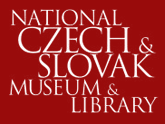
- This event has passed.
History on the 8’s Lecture: “The Emperor and the Peasant: Two Men at the Start of the Great War and the End of the Habsburg Empire”
March 21, 2018 @ 6:00 PM - 7:30 PM
Many significant moments in Czech and Slovak history occurred in years ending in “8.” This lecture series featuring five acclaimed authors and scholars who will put the pivotal events of 1918, 1938, 1948, and 1968 into context and show how they continue to shape our lives in 2018.
Sponsored by GreatAmerica Financial Services, and Gary and Cathy Rozek.
Cost: Free, RSVP at ncsml.org/events
Hear Dr. Kenneth Janda speak about his brand new book, The Emperor and the Peasant: Two Men at the Start of the Great War and the End of the Habsburg Empire, the first of five presentations in our History on the 8’s Lecture Series. Join us in the Skala Bartizal Library Wednesday evening at 6:00 pm for this dynamic presentation. A cash bar will be available. A book signing will follow the lecture. Books can be pre-ordered online and will also be available for purchase in the museum store.
[su_row][su_column size=”1/2″]About the Author: Kenneth Janda, a Payson S. Wild Professor Emeritus at Northwestern University, received the Frank J. Goodnow Award from the American Political Science Association in 2009. He has authored or edited several books on computer methods of data analysis, the cross-national study of political parties, and American government. He lives in Roseville, Minnesota with his wife who is the granddaughter of the Peasant, Samuel Mozolak.[/su_column]
[su_column size=”1/2″]About the Book:
Kenneth Janda, a Payson S. Wild Professor Emeritus at Northwestern University, received the Frank J. Goodnow Award from the American Political Science Association in 2009. He has authored or edited several books on computer methods of data analysis, the cross-national study of political parties, and American government. He lives in Roseville, Minnesota with his wife who is the granddaughter of the Peasant, Samuel Mozolak.[/su_column]
[su_column size=”1/2″]About the Book:
 There was more to World War I than the Western Front. This history juxtaposes the experiences of a monarch and a peasant on the Eastern Front. Franz Josef I, emperor of Austria-Hungary, was the first European leader to declare war in 1914 and was the first to commence firing. Samuel Mozolak was a Slovak laborer who sailed to New York–and fathered twins, taken as babies (and U.S. citizens) to his home village–before being drafted into the Austro-Hungarian army and killed in combat. The author interprets the views of the war of Franz Josef and his contemporaries Kaiser Wilhelm II and Tsar Nicholas II. Mozolak’s story depicts the life of a peasant in an army staffed by aristocrats, and also illustrates the pattern of East European immigration to America.[/su_column][/su_row]
[su_button url=”https://interland3.donorperfect.net/weblink/WebLink.aspx?name=E82716&id=276″ style=”flat” background=”#9a0900″ color=”#ffffff” size=”8″ icon_color=”#8a0606″]RSVP Here[/su_button]
There was more to World War I than the Western Front. This history juxtaposes the experiences of a monarch and a peasant on the Eastern Front. Franz Josef I, emperor of Austria-Hungary, was the first European leader to declare war in 1914 and was the first to commence firing. Samuel Mozolak was a Slovak laborer who sailed to New York–and fathered twins, taken as babies (and U.S. citizens) to his home village–before being drafted into the Austro-Hungarian army and killed in combat. The author interprets the views of the war of Franz Josef and his contemporaries Kaiser Wilhelm II and Tsar Nicholas II. Mozolak’s story depicts the life of a peasant in an army staffed by aristocrats, and also illustrates the pattern of East European immigration to America.[/su_column][/su_row]
[su_button url=”https://interland3.donorperfect.net/weblink/WebLink.aspx?name=E82716&id=276″ style=”flat” background=”#9a0900″ color=”#ffffff” size=”8″ icon_color=”#8a0606″]RSVP Here[/su_button]


